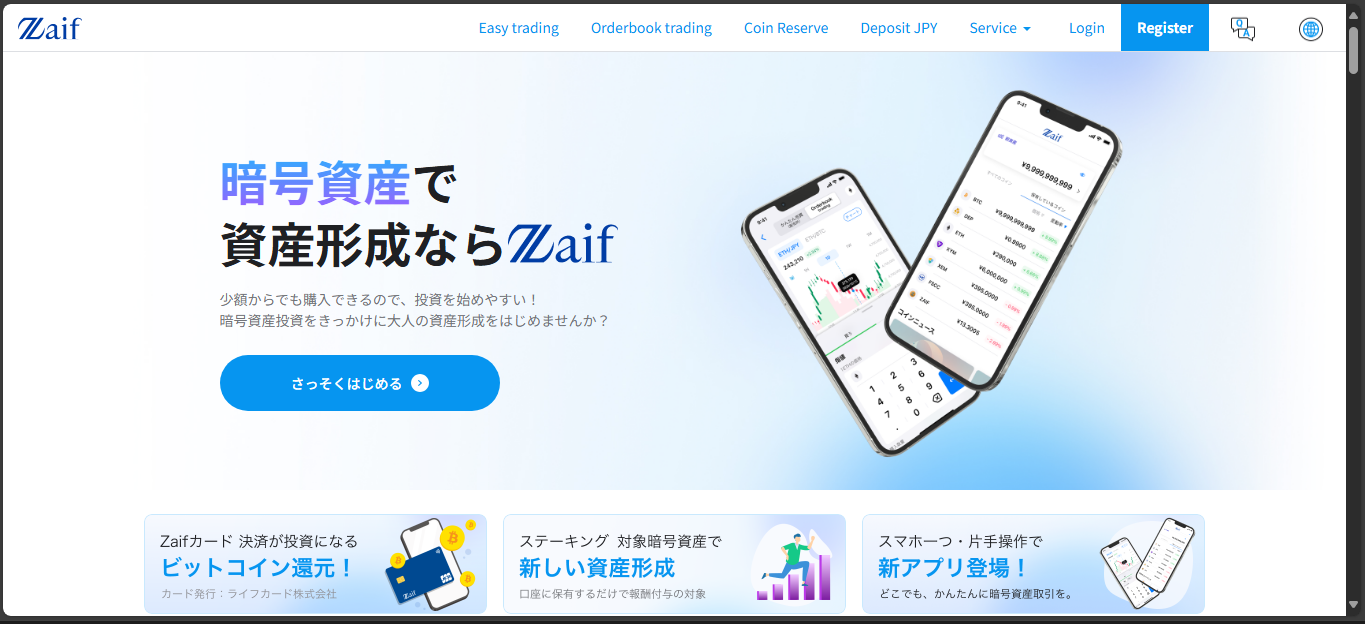Zaif – Exchange Review

Zaif pops up as one of Japan’s earliest licensed crypto exchanges – launched in 2014, rooted in Tokyo, offering JPY-crypto pairs, margin options and soft-landing after a major hack. It’s small in scale but big on character.
Grounded in Japan, Regulated from the Start
Zaif took off in mid-2014 under Tech Bureau in Osaka. It was among the first exchanges to hold a license from the Japanese Financial Services Agency (JFSA) – a signal of trust and compliance. After the turbulent Mt. Gox era, Zaif was part of Japan’s push to shape regulated crypto markets.
A Hack and a Comeback You’ll Remember
In 2018, hot wallets got breached, and roughly $60 million worth of crypto vanished. That shook users and the industry. Zaif paused, FISCO – a brokerage firm – bailed it out to the tune of 5 billion yen, and by 2019 assumed full operations. The exchange eventually restarted service and resumed trust rebuilding.
JPY Focused Trading
Fiat-crypto trading is Zaif’s core. It handles BTC/JPY, ETH/JPY and more in a local-friendly way. That makes crypto feel closer to home for Japanese users.
Fee Culture Designed Right
Spot trading sticks to 0% maker fee and roughly 0.1% taker fee – lean but fair. Margin trading offers up to 7.7x leverage, with a daily lending rate around 0.039% and a 0.7% commission. Account balance maintenance fees kick in only if KYC isn’t completed – from 100 yen on smaller balances up to 10% over certain thresholds.
Trading Tools with Japanese Precision
Zaif offers simple order-book trading, an easy P2P interface for quick buys, margin facilities, crypto-reserve (a kind of staking option), and even a Japanese-powered NFT marketplace. It’s meant for local users who want clarity, not noise.
Volume & Scope – Modest But Meaningful
Zaif supports around 17-24 coins across 14-30 markets with daily volume roughly in the low millions of dollars – modest compared to global giants but high-touch for Japanese DeFi based on Coin360 and Messari stats.
Security & Trust – Slowly Rebuilt
Post-hack, Zaif leaned into cold wallets, 2FA, audits, and regulatory oversight. Still, proof-of-reserves hasn’t been a click away. Historical scars linger, though their focus on compliance shows in tools and process upgrades.
Restricted Reach and Language Focus
Zaif is tightly Japan-centric. Registration often closes to overseas applicants, especially post-2022. It’s designed for Japanese-speaking users – policy, interface and support all reinforce that market fit, but it limits global appeal.
Strengths & Weaknesses at a Glance
Strengths:
- Fully licensed in Japan – regulatory clarity matters
- JPY pairs and fiat access great for domestic users
- Maker rebates and tight taker fees keep costs low
- Margin up to 7.7x with balanced interest and commission
- Deep local understanding and tailored UX
Weaknesses:
- History of a major hack still shadows its reputation
- Modest liquidity – not ideal for large or fast trades
- Limited availability beyond Japan – global traders blocked
- No proof-of-reserves – transparency incomplete
- Margin complexity may deter casual traders
Final Thoughts
Zaif isn’t flashy, but it’s authentically transplanted in Japan’s crypto landscape. It survived one of the worst hacks, came back under regulation, and still serves JPY users with focused tools. If you live in Japan and want a trusted, simple exchange for BTC, it holds appeal. But if you seek deep liquidity, advanced global markets or total transparency, it may feel quaint.
In crypto, Zaif’s story is a reminder – surviving and serving locally can count more than chasing global scale.
Disclaimer
“This content is for informational purposes only and does not constitute financial advice. Please do your own research before investing.”






